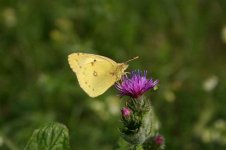
I thought the season was coming to an end - the last couple of weeks have seen a general decline in numbers of species and individuals - but today was just excellent! Many new butterflies on the wing, dozens on the commoner Small Tortoiseshells, Peacocks and Brimstones, a scattering of Red Admirals and then came across a meadow of fritillaries. Top of the bunch were several real nice Queen of Spain Fritillaries, also a lot of Small Pearl-bordered Fritillaries. Then came across one more - have to say it's another that puzzling me, narrowed it to a couple of species, then considering it might be a worn individual of another. Was not a large fritillary and very 'dingy', but what seems distinctive is this brown spot on the forewing almost totally circled by orange. So, what is it?
Pictures 1 & 2 Queen of Spain Fritillary
Pictures 3 & 4 Small Pearl-bordered Fritillary
Picture 5 ???
Pictures 1 & 2 Queen of Spain Fritillary
Pictures 3 & 4 Small Pearl-bordered Fritillary
Picture 5 ???
Attachments
-
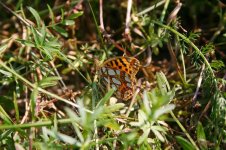 Fritillary - Queen of Spain1-thumb.jpg96.2 KB · Views: 76
Fritillary - Queen of Spain1-thumb.jpg96.2 KB · Views: 76 -
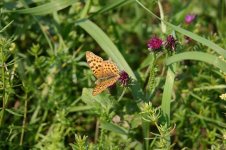 Fritillary - Queen of Spain2-thumb.jpg73.8 KB · Views: 67
Fritillary - Queen of Spain2-thumb.jpg73.8 KB · Views: 67 -
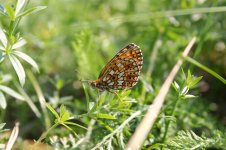 Fritillary - Small Pearl-bordered u2-thumb.jpg68 KB · Views: 85
Fritillary - Small Pearl-bordered u2-thumb.jpg68 KB · Views: 85 -
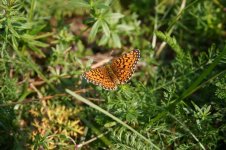 Fritillary - Small Pearl-bordered u3-thumb.jpg83.5 KB · Views: 76
Fritillary - Small Pearl-bordered u3-thumb.jpg83.5 KB · Views: 76 -
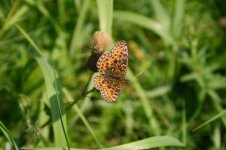 Fritillary - question -thumb.jpg51 KB · Views: 92
Fritillary - question -thumb.jpg51 KB · Views: 92




